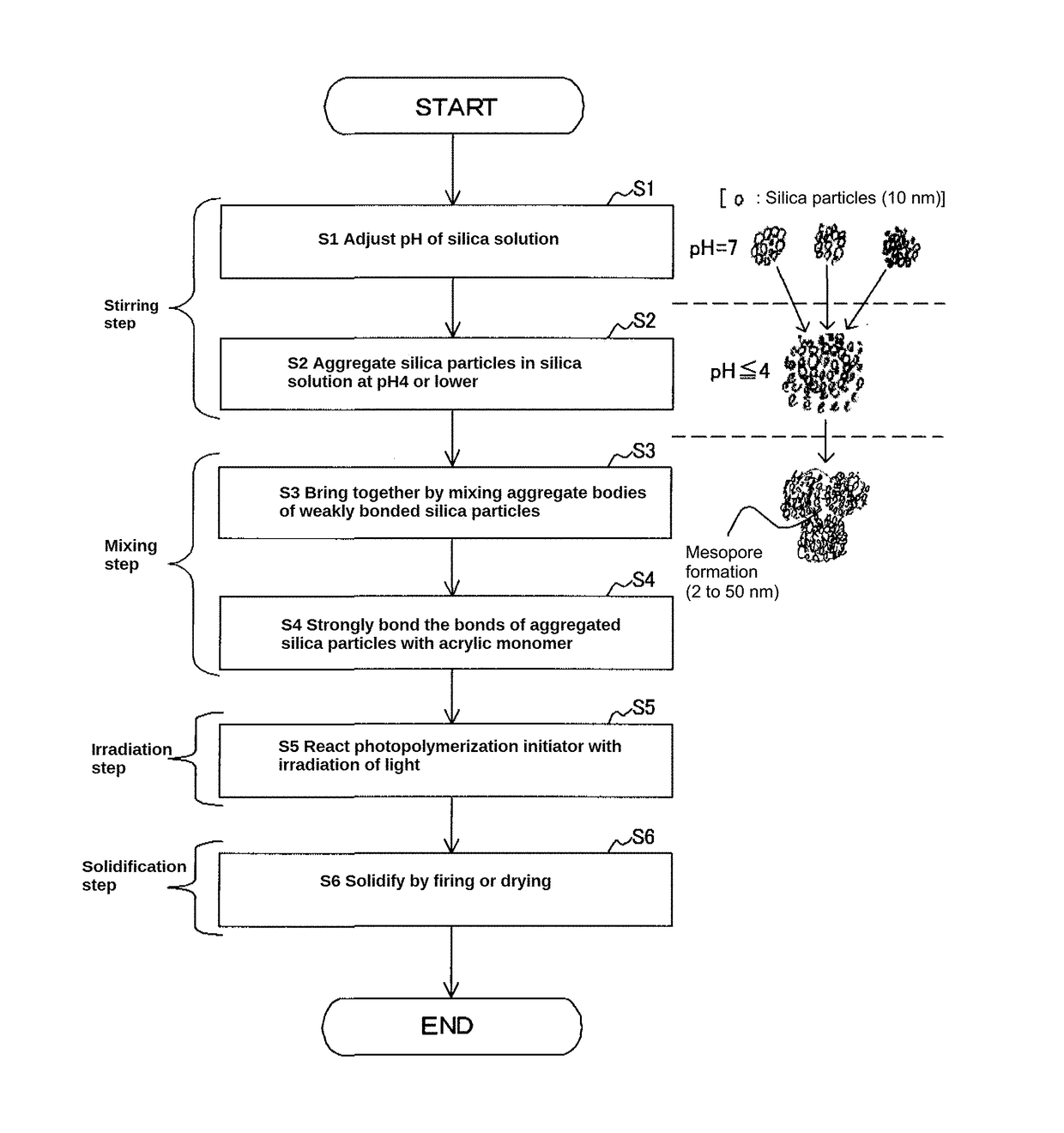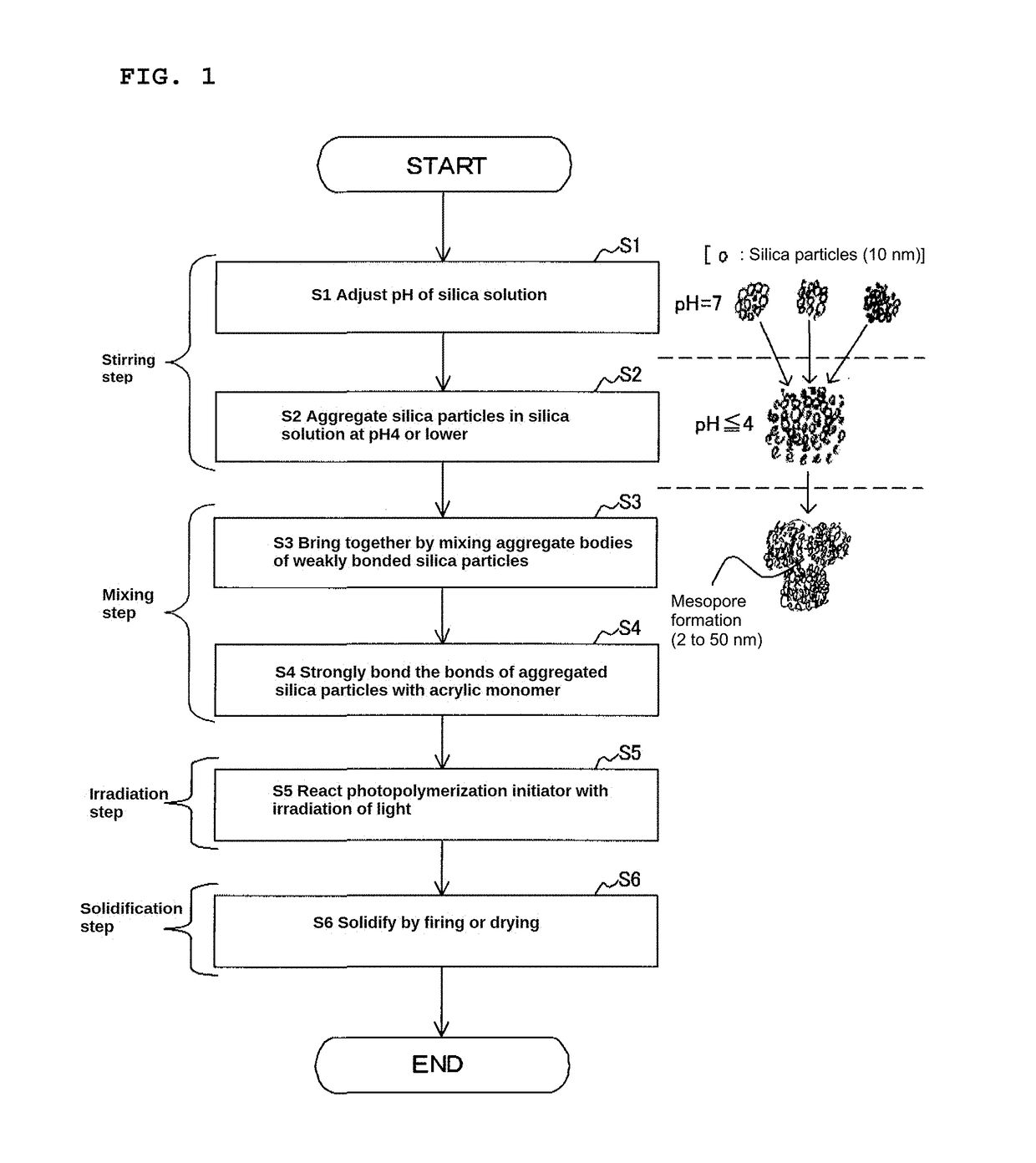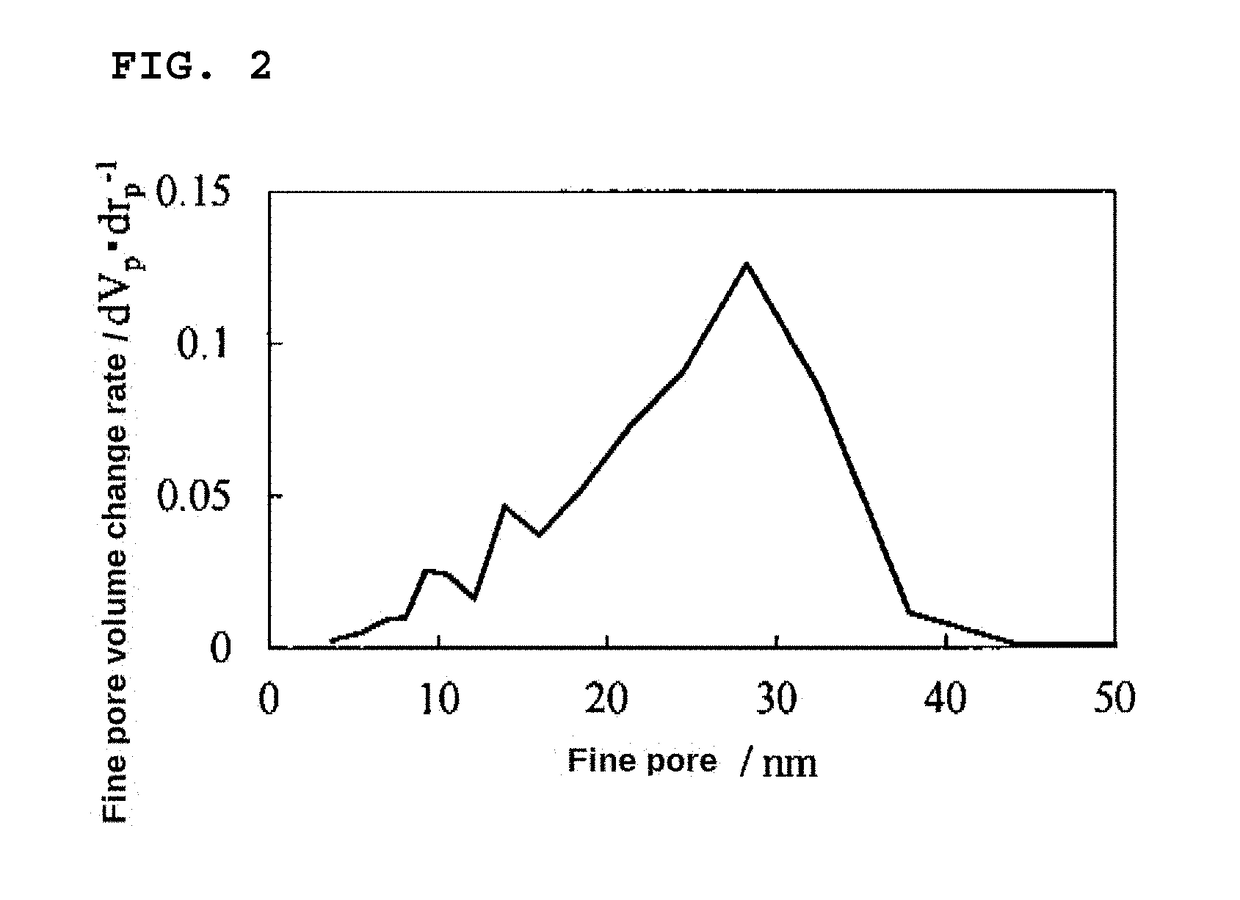Silica glass precursor production method, silica glass precursor, silica glass production method, and silica glass
a technology of silica glass and precursor, which is applied in the direction of silicon oxides, glass making apparatus, manufacturing tools, etc., can solve the problems of difficult to provide a smooth surface during polishing, difficult to achieve a smooth surface, and long time of 1 week for evaporation drying process, etc., to achieve energy saving, low cost production, and enormous thermal energy
- Summary
- Abstract
- Description
- Claims
- Application Information
AI Technical Summary
Benefits of technology
Problems solved by technology
Method used
Image
Examples
example 1
[0107]A silica slurry prepared in the first preparing step of the Examples described above and a solution prepared in the second preparing step were mixed at a weight ratio of 99:1 to 80:20 to prepare a solution. The prepared aqueous solution was cast into a mold having an arbitrary shape, and irradiated with ultraviolet or visible light for about 5 seconds to about 60 seconds, to confirm the light curing of the solution. A molded body having the arbitrary shape was obtained by removing from the mold form. As examples, the results of Examples will be shown in Table 1.
TABLE 1X15677.58910FractionSiO224.7523.7523.5023.2523.1223.0022.7522.50by weight2-HEA0.984.905.886.867.357.848.829.80(wt %)IRGAGURE0.020.10.120.140.150.160.180.20TPOWater74.2571.2570.569.7569.3869.0068.2567.50Curing Time: EvaporationGoodGoodGoodGoodGoodGoodGoodGoodSurface state after curingGoodGoodGoodGoodGoodGoodGoodGoodHardnessMold releaseGoodGoodGoodGoodGoodGoodGoodGoodDry cracksNot goodNot goodNot goodGoodGoodGoodGo...
example 2
(Nanoparticles)
[0110]33.5 g of silica nanoparticles (average primary particle size: 7 nm) were added into 66.5 g of distilled water, followed by ultrasonic dispersion, to produce 100 g of a 33.5 wt % silica nanoparticle dispersion solution. 100 μl of HNO3 was added thereto, to adjust a pH to 3. A photopolymerization initiator (IRGACURE TPO; diphenyl(2,4,6-trimethylbenzoyl)phosphine oxide) was added into a monomer (4-hydroxybutyl acrylate, 4-HBA) at a ratio of monomer:polymerization initiator=98:2 (wt %), to produce a monomer-polymerization initiator mixed-solution. The obtained silica nanoparticle dispersion solution and monomer-polymerization initiator mixed-solution were mixed at a predetermined ratio (for example, 99:1 to 70:30, and more suitably 99:1 to 95:5), to produce a SiO2-(4HBA) mixed-solution. The mixed-solution was cast into a container, and irradiated with UV-LED light having a wavelength of 385 nm to obtain a SiO2-(4-HBA) gel. The gel was removed from a mold, and dried...
example 3
[0111]The influences of an acrylic monomer (4HBA) and a photopolymerization initiator (IRGACURE TPO) changed under the same conditions as that of Example 2 described above, on an end glass product were confirmed. The photopolymerization initiator (IRGACURE TPO; diphenyl(2,4,6-trimethylbenzoyl)phosphine oxide) was added into the monomer (4-hydroxybutyl acrylate, 4-HBA) at a ratio of monomer:polymerization initiator=(100−x): x (wt %) (dispersion solution: [acrylic monomer (4HBA) and photopolymerization initiator (IRGACURE TPO)] was set to a constant value of 95:5), and a monomer-polymerization initiator mixed-solution was produced while the ratio x of the polymerization initiator was changed to 1 to 10, to produce a SiO2-(4HBA) mixed-solution. As a result of annealing the obtained nano composite at 1200° C. to 1300° C. in air, N2, Ar, He gas, or a vacuum atmosphere, massive silica glass transparent bodies were obtained. The chemical constitutions of the obtained glass transparent bodi...
PUM
| Property | Measurement | Unit |
|---|---|---|
| viscosity | aaaaa | aaaaa |
| size | aaaaa | aaaaa |
| particle diameter | aaaaa | aaaaa |
Abstract
Description
Claims
Application Information
 Login to View More
Login to View More - R&D
- Intellectual Property
- Life Sciences
- Materials
- Tech Scout
- Unparalleled Data Quality
- Higher Quality Content
- 60% Fewer Hallucinations
Browse by: Latest US Patents, China's latest patents, Technical Efficacy Thesaurus, Application Domain, Technology Topic, Popular Technical Reports.
© 2025 PatSnap. All rights reserved.Legal|Privacy policy|Modern Slavery Act Transparency Statement|Sitemap|About US| Contact US: help@patsnap.com



